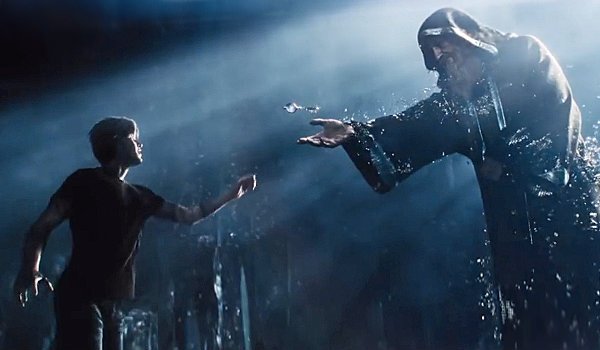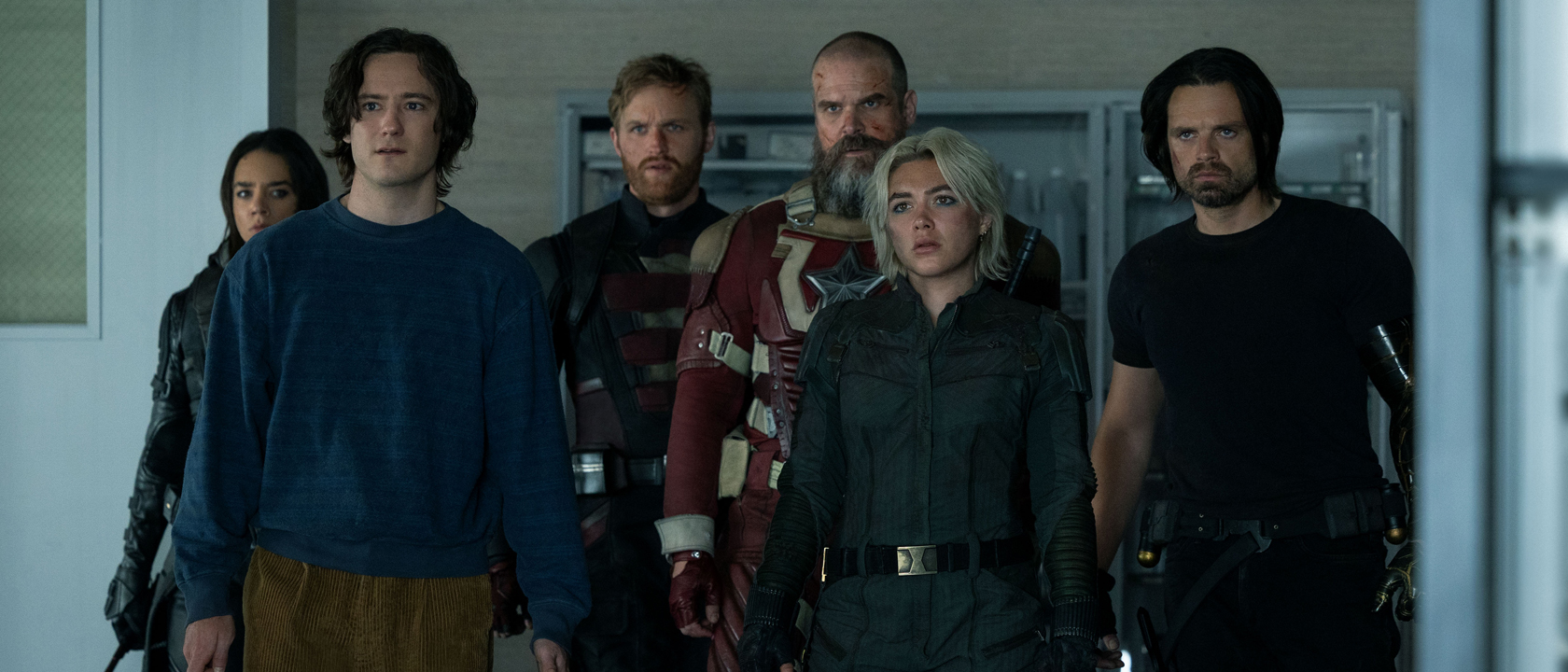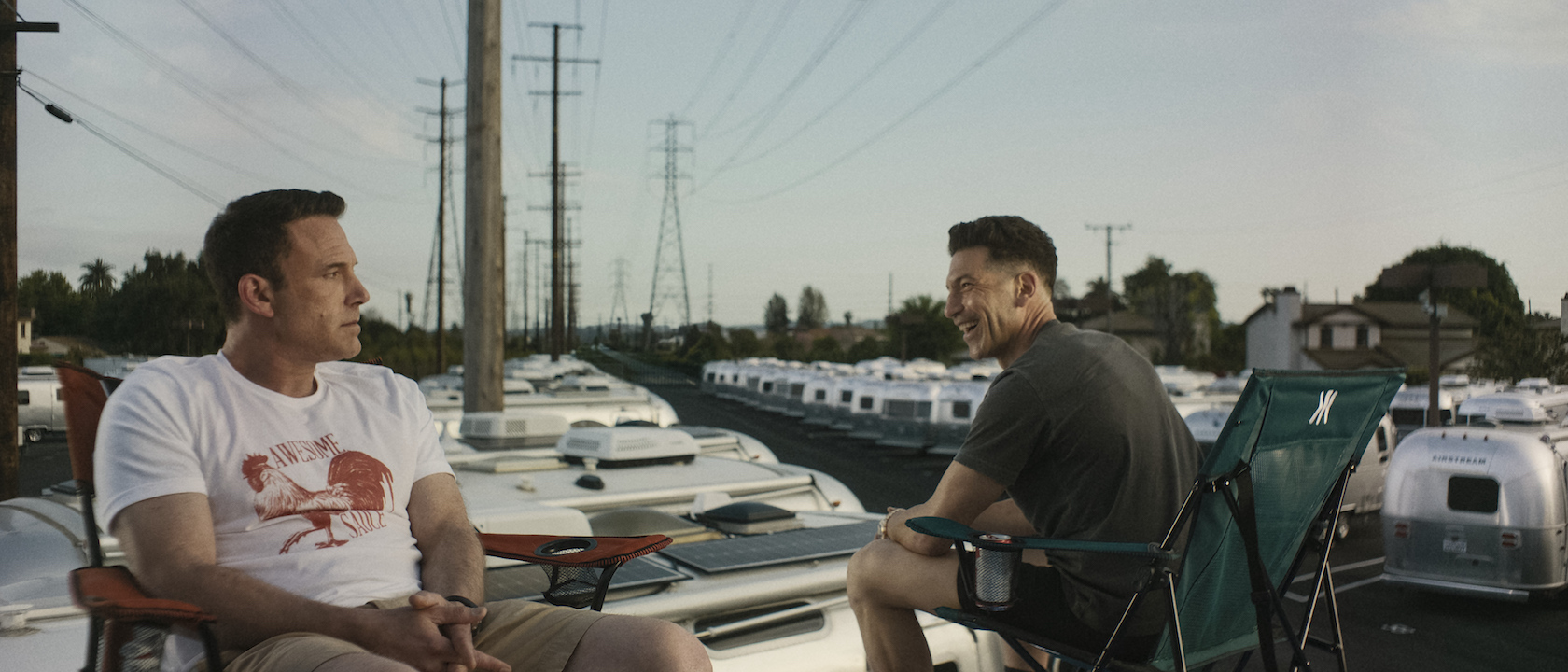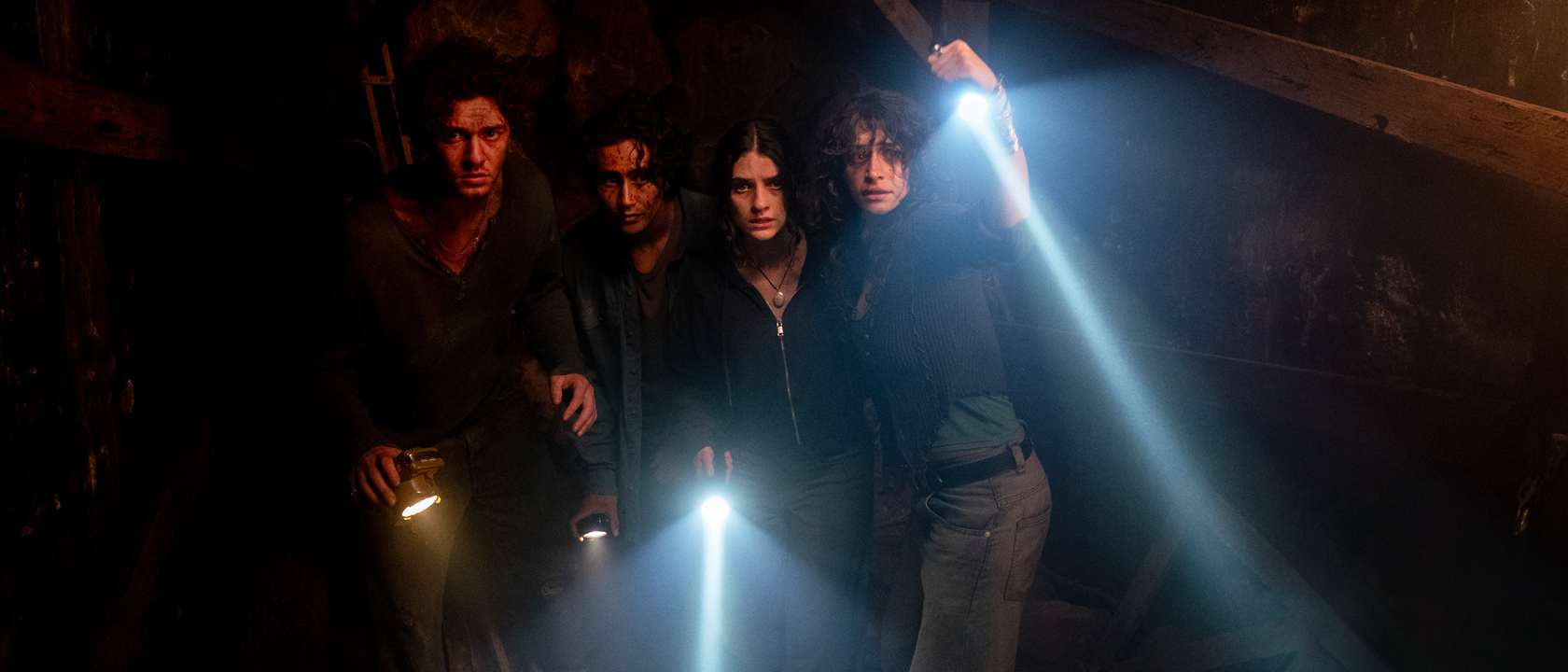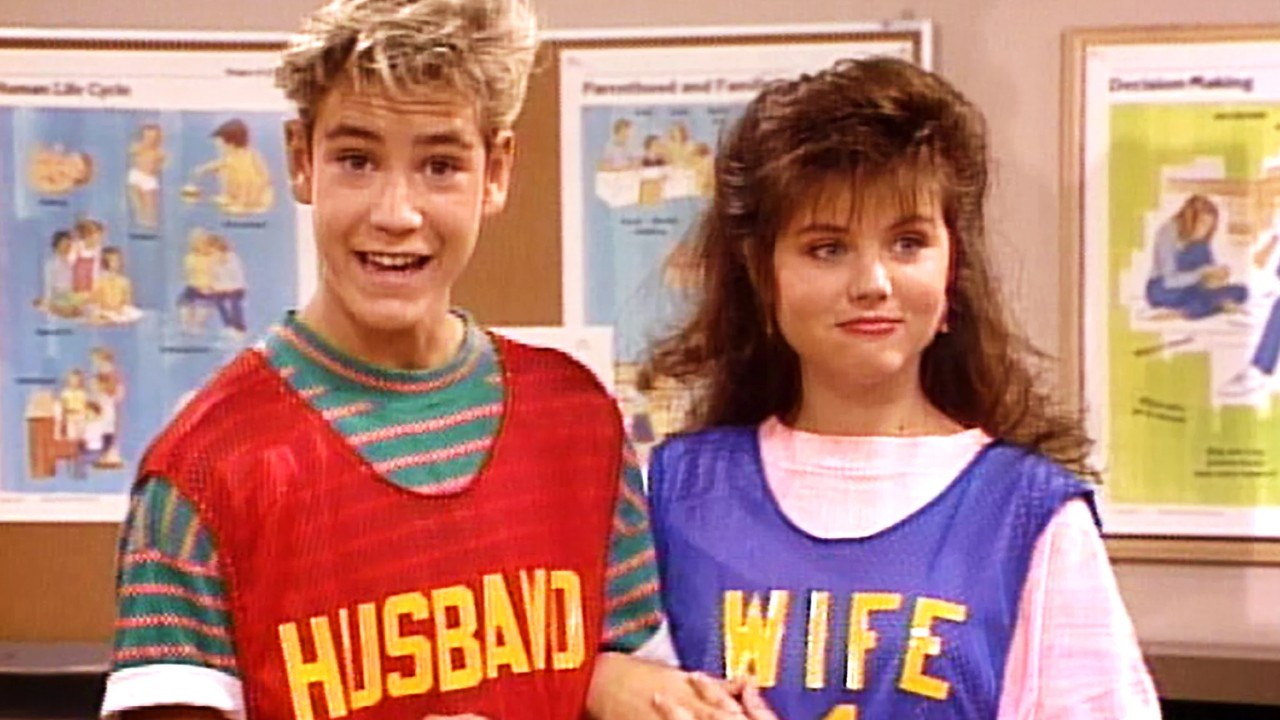Roughly halfway through Ready Player One, our scrappy, young heroes find themselves running through a warehouse as a group of armed, uniformed soldiers comes crashing through all of the doors to take them into custody. The music swells, and a game of cat and mouse ensues. At this point, it becomes apparent that we haven't seen this type of pure escapist adventure at the movies in a long time, and it invokes a degree of nostalgia that feels tailor-made for a film designed as an ode to 1980s pop culture. Ready Player One works best when it embraces that classic Steven Spielberg sense of spectacle, and while it feels somewhat rushed and less character-driven than his best movies, it's still a fun romp that reinforces his reputation as a master of his craft.
The whole thing begins with a history lesson. Wade "Parzival" Watts (Tye Sheridan) tells us that an odd-yet-brilliant genius named James Halliday (Mark Rylance) fundamentally changed the world with the creation of the OASIS -- a massive, virtual landscape not bound by the laws of physics or reality. The OASIS serves as the only source of comfort for a world largely engulfed in environmental and economic turmoil, and many choose to live their lives exclusively within its boundaries. However, the sudden death of an aging Halliday reveals a brand-new game: the search to find an "Easter egg" hidden in the OASIS that will grant its owner full control of the simulation and the entirety of Halliday's half-trillion-dollar fortune.
What follows is a race against time and the evil forces of a malevolent tech giant run by Nolan Sorrento (Ben Mendelsohn) as Wade, Art3mis (Olivia Cooke), Aech (Lena Waithe) and others engage in a bitter battle to find the egg. Think Willy Wonka and the Chocolate Factory meets It's a Mad, Mad, Mad, Mad World. Along the way, they're put to the test as they go through a wringer of trials (designed by Halliday) to gauge their knowledge of 1980s pop culture and determine their worthiness to run the OASIS and determine the future of the world.
Out of the gates, we need to address Ready Player One's polarizing use of pop culture touchstones to fill out its story. That's a fundamental element of Ernest Cline's original book, and it has become a divisive storytelling technique, with some praising the intermingling of film, television, and video game characters in one landscape and others criticizing it as a ploy to capitalize on the current wave of nostalgia that has a vice grip on Hollywood. Despite the fervor from both camps, Ready Player One proves both of them right. The film mostly blends its various pieces of intellectual property to create genuinely enthralling landscapes that any nerd would kill to exist in (the world-building here is top notch), but it also sometimes features scenes that go overboard in the number of winks and nods that they force into the story.
For example, Wade Watts using a Delorean from Back to the Future as his go-to car makes sense and feels natural for the world. On the other hand, a montage of his avatar trying on different movie-themed skins to wear to a party, or using a gadget called the Zemeckis Cube (which, as you may have guessed, has time-bending abilities) feels somewhat forced. That said, Spielberg mostly toes the line and makes it work, streamlining Ernest Cline's source material and making a dense novel seem digestible as a film.
Speaking of which, we should note that the best thing that we can say about Ready Player One is the fact that it finds an emotional core not present in the book. In the book, James Halliday is a mythic figure who mainly exists in the past, but Spielberg finds genuinely innovative ways to give Mark Rylance (seemingly his good luck charm these days) far more to dig into with the role. As a result, Ready Player One's basic premise feels stronger than it did in the novel, the Halliday character offers some great heart and humor that feel ripped straight from Spielberg's best movies.
On the other hand, the emphasis on an examination of James Halliday as a real character in the story also has the unintended consequence of short-changing other characters in the Ready Player One ensemble. Tye Sheridan brings a strong sense of humanity and naivety to Wade Watts (who can be a real nightmare in the novel), and Olivia Cooke is arguably the standout among the entire ensemble as Art3mis, the beating heart of the story and the impetus for Wade's turn from selfish kid to full-blown hero. The problem is that's about as far as things go for interesting characters, and the other members of the quintet of heroes (known as the "High Five") don't get nearly as much room to grow and develop as they do in the source material, so their connections to Wade never feels quite as strong as the friendships seen in the most beloved Spielberg films.
Even more underserved are the villainous roles in Ready Player One. Following his work in films like The Dark Knight Rises and Rogue One: A Star Wars Story, Ben Mendelsohn continues to be underutilized by blockbuster films, instead forced to play a bumbling, bureaucrat once again. Similarly bland is Hannah John-Kamen as Nolan Sorrento's loyal henchwoman, which mostly feels like she's playing Luv from Blade Runner 2049. The only villain in the movie with a shred of genuine personality is T.J. Miller as i-R0k, but at a certain point, even he merely feels like he's playing the T.J. Miller character seen in Deadpool or Silicon Valley.
Of course, without the airtight characterizations of Steven Spielberg's other films, Ready Player One still manages to wow on a technical level. The man behind Jurassic Park and Jaws exhibits a shocking ability to adapt and evolve with the progression of filmmaking technology that has taken place over the course of his lengthy career, and Ready Player One is no exception. The enormous battle scenes are top notch (Spielberg's eye for camerawork is as keen as ever), and the sound design in the OASIS' biggest sequences feels second-to-none. Make no mistake; there are legitimately jaw-dropping action set pieces in Ready Player One that rival anything seen in even the most impressive blockbuster franchises, and they leave a lasting impression. Think about it; how often do you get to see a massive death match featuring a series of fan-favorites from the DC lore, horror movie icons, Halo's Spartans, and the Teenage Mutant Ninja Turtles (just to name a few)? That question was rhetorical.
Somewhat less impressive are the non-OASIS sections of the movie. The VR landscape that makes up the majority of the film's runtime absolutely dazzles, but the sequences of Wade and the rest of his comrades fighting for survival in the real world never quite match the intensity or inventiveness of the OASIS. With that said, Ready Player One definitely wants to reach its highest heights in the endlessly imaginative (and continuously referential) landscape of the OASIS, and that's where it shines.
While not quite peak Spielberg, Ready Player One is a fun exploration of pop culture with a fantastic sense of spectacle that mostly makes up for some weak plotting. It might not tug at your heartstrings like Jurassic Park or E.T. did when they debuted, but it will almost certainly make you want to throw on some Van Halen and dust off your VHS collection.
Originally from Connecticut, Conner grew up in San Diego and graduated from Chapman University in 2014. He now lives in Los Angeles working in and around the entertainment industry and can mostly be found binging horror movies and chugging coffee.
